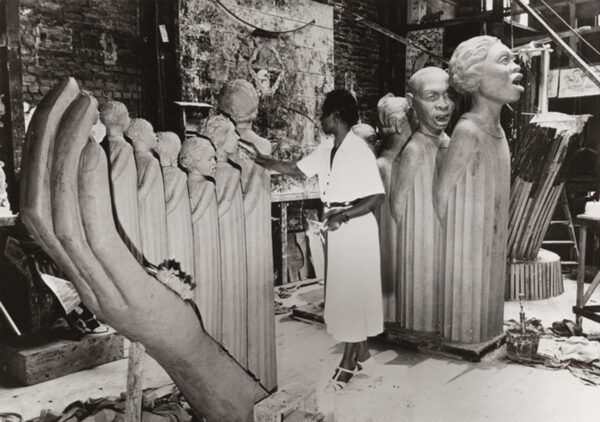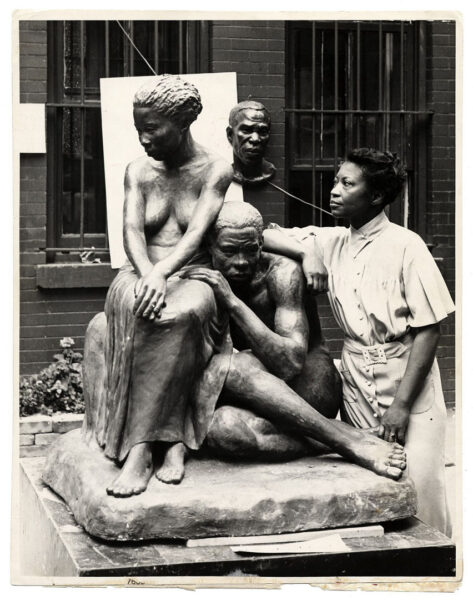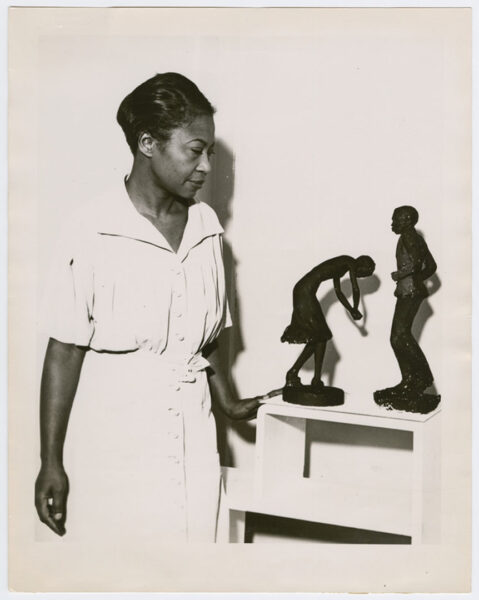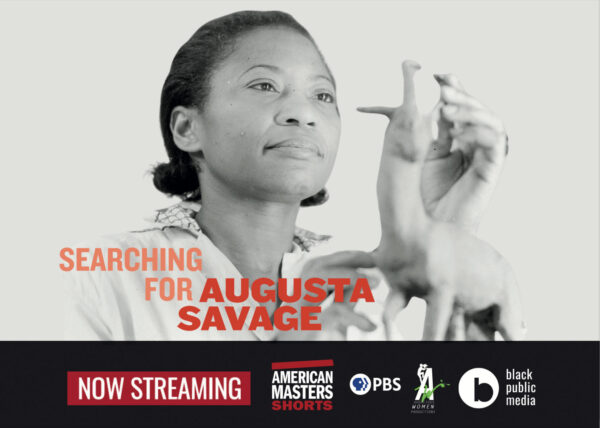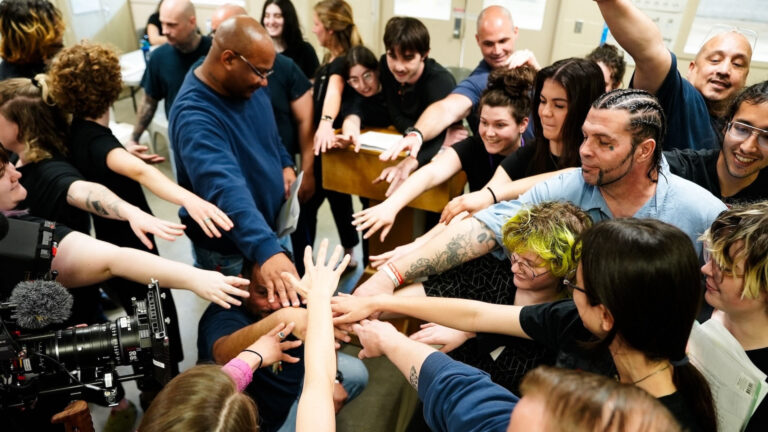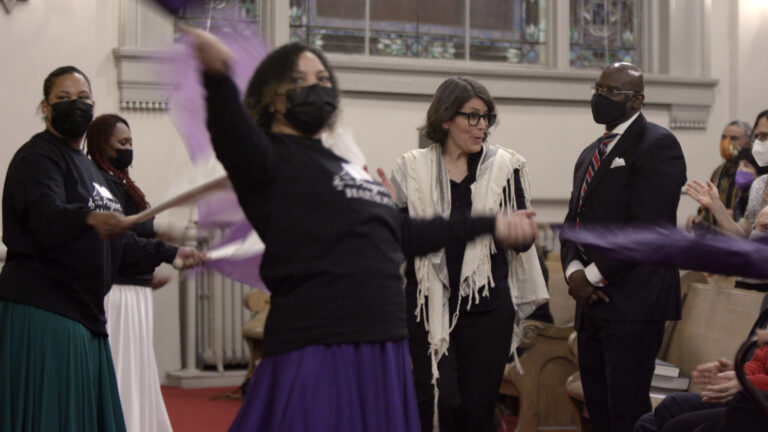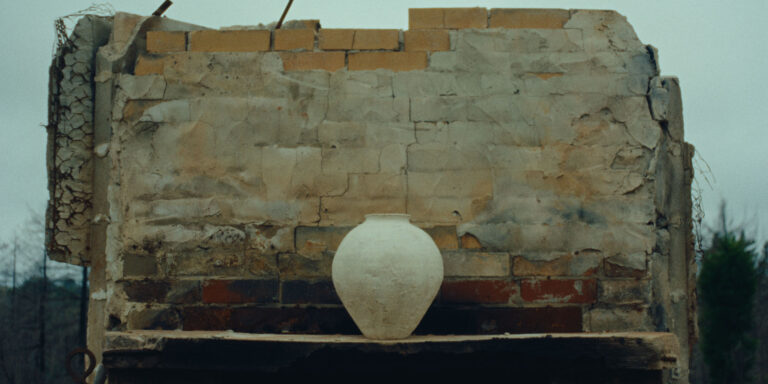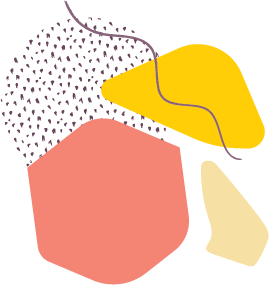Augusta Savage is an amazing woman who undoubtedly fits the description of “audacious,” as she overcame great odds to accomplish many firsts in her 70 years of life. Born in 1892 in Green Cove Springs Florida, she had a strong desire to be an artist and work with clay at a very young age, a pastime that both her parents vehemently opposed. Her father was a Methodist minister who saw the animals she made as sinful graven images. Savage said that her parents “practically whipped the art out of [her].” Thankfully, she persisted. Initially self-taught, she entered a bust of former West Palm Beach Mayor, George Graham Currie, her interpretation of a wild stallion she modeled using a donkey, and a few religious statues in the 1919 West Palm Beach County Fair, exhibiting her work between stalls of farm animals, fruits and vegetables. Savage won a blue ribbon and $25 prize, and her passion and promise were so contagious that the fair’s attendees spontaneously took up a collection to support her dream of becoming an artist and send her to New York. Before moving to New York City, Augusta Savage spent time in Jacksonville, Florida trying to convince “wealthy Negroes” to have busts made. But that plan did not pan out. In 1921, Savage took a train from Jacksonville to the Big Apple wearing a homemade coat with $4.50 in her purse. After completing a 4-year art course at Cooper Union in three years, she became one of the leading influencers of the Harlem Renaissance, was acclaimed as one of the most talented artists of the time period, and called “Sculptress of the Negro People” because she centered Black life in her work. She opened the first gallery dedicated to the exhibition of Black art in 1939. She also mentored a generation of artists, including Romare Bearden, Gwendolyn Knight, and Jacob Lawrence, and founded several organizations to provide free art education to over 2,500 people. Savage got a big break as the only Black artist, and one of four women, commissioned to create an exhibit for the 1939 World’s Fair in Flushing, NY. She decided to create a tribute to her friend from Jacksonville, Florida, former NAACP head and poet, James Weldon Johnson, who had composed the lyrics for the Black National Anthem, “Lift Every Voice and Sing.” Augusta Savage took over a year to create a 16-foot sculpture depicting a choir of 12 Black children singing, arranged like strings on a harp held up by the hand of God. Her monument to Black culture and the promise of Black youth, also known as “The Harp,” was among the fair’s most visited and photographed exhibits seen by more than five million people. Yet tragically, “Lift Every Voice and Sing,” was bulldozed when the Fair closed, as Savage was not able to raise the funds to transport and store it, or have it cast in durable materials. In fact, more than half of the 160 works of art Savage created are missing or have been destroyed, and none of her monumental large-scale works have survived. In addition, little is known about her extensive accomplishments today. The 22-minute documentary short that we executive produced, directed, and wrote is titled Searching for Augusta Savage because we wanted to investigate why evidence of Savage’s accomplishments and her work appear to be erased. We wanted to know how someone so accomplished, so enterprising and so celebrated during her lifetime, could be missing from the annals of American history and the museum landscape. We found that Augusta Savage was fearless and outspoken. She protested against an incident she experienced in 1923, when she was accepted, and then rejected from participation in a prestigious art fellowship in Paris because of her race, initiating a letter writing campaign and speaking out in editorials and interviews in mainstream media. She also resisted sexism, even from some of her counterparts in the Harlem Renaissance, such as scholar Alain Locke, who questioned Savage’s academic credentials and why she was the subject of so much media attention. Also, because of her association with Black identity movements such as the United Negro Improvement Association (UNIA) and other progressive causes, Savage was being investigated by the FBI. But these challenges did not deter her art activism or her art practice, including writing poems and children’s stories. Throughout her life, Savage continued to teach art to children everywhere that she lived – in Florida, Harlem, and Saugerties, NY, where she spent the last two decades of her life. In Searching for Augusta Savage, we are investigating the impact of erasure that may have resulted from Savage’s art activism and artistic choices, but that is also inherent in museums and the art culture in this country. The fact that so little of her work is in the permanent collections of museums and available to the public is an issue that has relevance today, as Black women continue to be the artists with the lowest representation and visibility in the art marketplace. As reported in the 2022 Burns Halperin Report, between 2008 and 2020, just 11% of acquisitions, and 14.9% of exhibitions at U.S. museums were of work by female-identifying artists, and only 2.2% of acquisitions, and 6.3% of exhibitions were by Black American artists. Just 0.5%, that’s less than 1% of acquisitions, were the work of Black American women. (https://news.artnet.com/art-world/letter-from-the-editors-introducing-the-2022-burns-halperin-report-2227445) To counter the fact that much of her art is not available today, we collaborated with new technology artists to create and animate interpretations of Savage’s most impressive lost work of art, “Lift Every Voice and Sing,” the 16-foot sculpture she created for the 1939 World’s Fair which is reconstructed in the film. Informed by Savage’s own words and writings, we also recreated major moments in Savage’s childhood for which no archival or visual documentation exists – including the clay ducks that were the first art that Savage created as a child, as well as the story she told of her birth on February 29 in a leap year. We feel that digital reconstruction of Savage’s missing monument, as well as the scenes of creative impetus in her life, are powerful tools for remembrance, helping us reverse Savage’s historical erasure. The voice of Augusta Savage is brought back to life in the film through voice-over readings by actor Lorraine Toussaint, of Savage’s own words pulled from quotes in newspaper clippings, as well as excerpts from a 5-page interview she conducted with the Federal Art Commission in 1935. Augusta Savage had tremendous resolve and commitment. Her sense of mission and self-determination are legendary, especially for a young Black woman from the South in the 1920s. She has been called a “waymaker” for confronting racism and overcoming countless obstacles, and for being so dedicated to creating careers in the arts for so many Black artists and aspiring artists. Her experiences countering under-representation in the art world still resonate today. It has been a privilege to tell her story and provide testimony to the life, work and example of Augusta Savage!
